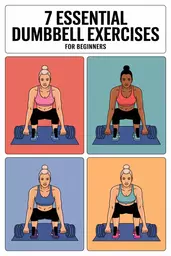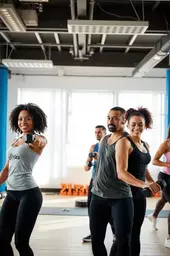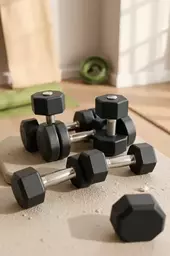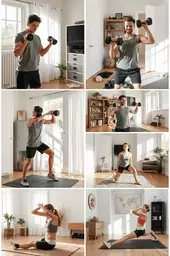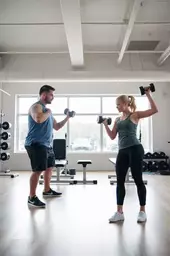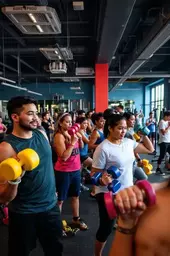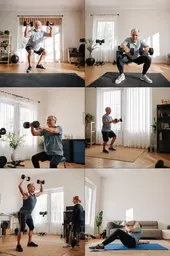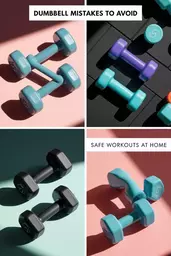
Low-Impact Dumbbell Workouts For Everyone
Step 1: Start with the Ultimate Dumbbell Warm-Up
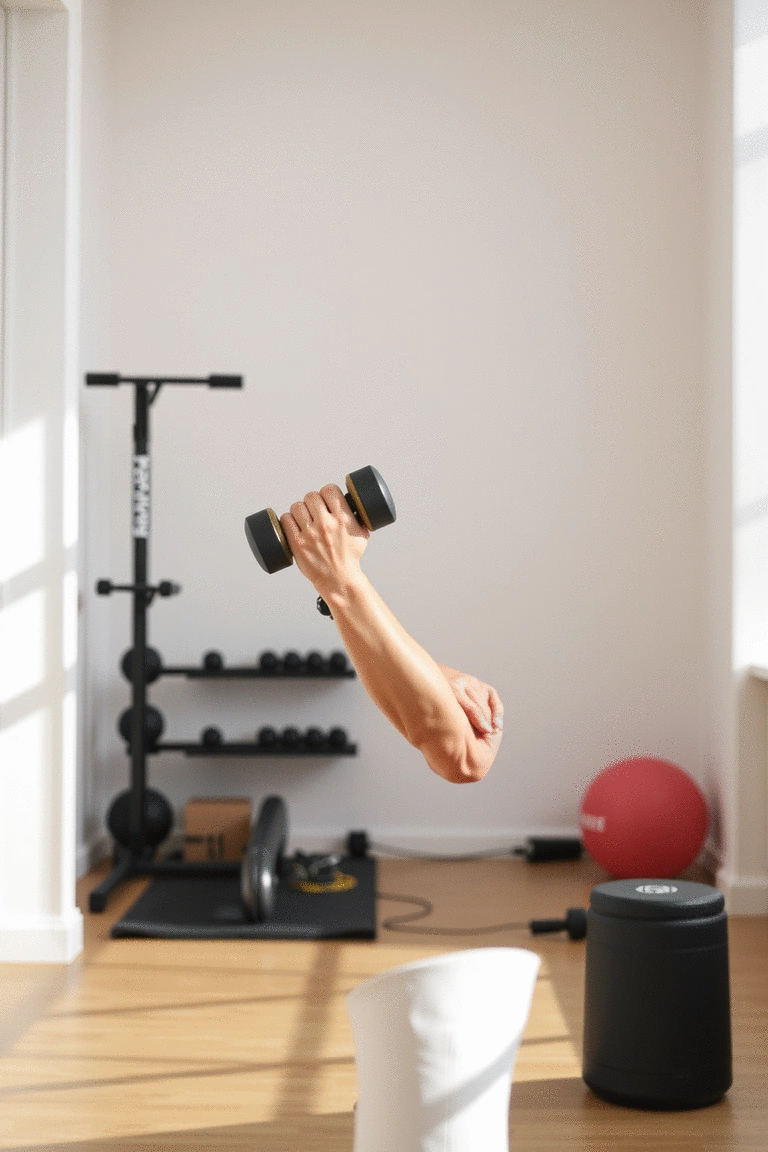
Prepare your body for a joint-friendly workout with a dynamic warm-up.
Why this works: Starting with a proper warm-up enhances blood flow to your muscles and reduces the risk of injury. Gentle movements using light dumbbells also improve flexibility, making the following exercises more effective and comfortable.
How to implement this step:
- Arm circles: Perform 10-15 arm circles in each direction.
- Standing torso twists: Rotate your upper body gently for 10 repetitions.
- Light dumbbell shoulder presses: Use light weights for 10-12 reps to engage your shoulders.
💡 Pro Tip: Prioritize your warm-up—it's crucial for a successful workout, especially with joint-friendly exercises!
Step 2: Master the Essential Dumbbell Deadlift
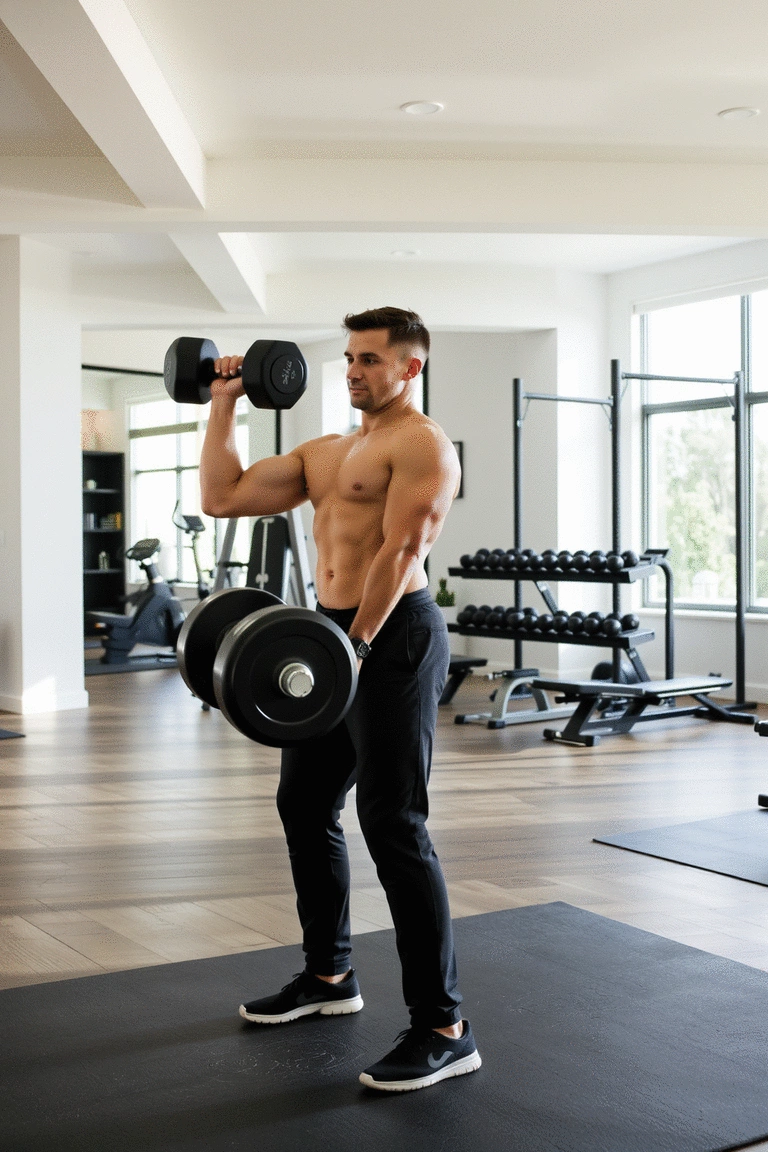
Engage your core and strengthen your legs with this powerful move.
Why this works: The dumbbell deadlift effectively targets your hamstrings and glutes while protecting your back. It’s a fantastic low-impact exercise that builds strength without putting undue stress on your joints.
How to implement this step:
- Stand tall: Position feet shoulder-width apart, holding dumbbells in front.
- Bend at the hips: Lower your torso while keeping your back straight.
- Lift with your legs: Stand back up, engaging your glutes at the top.
💡 Pro Tip: Keep your core engaged throughout the movement to maintain proper form and maximize effectiveness.
Step 3: Try the Best Dumbbell Shoulder Press
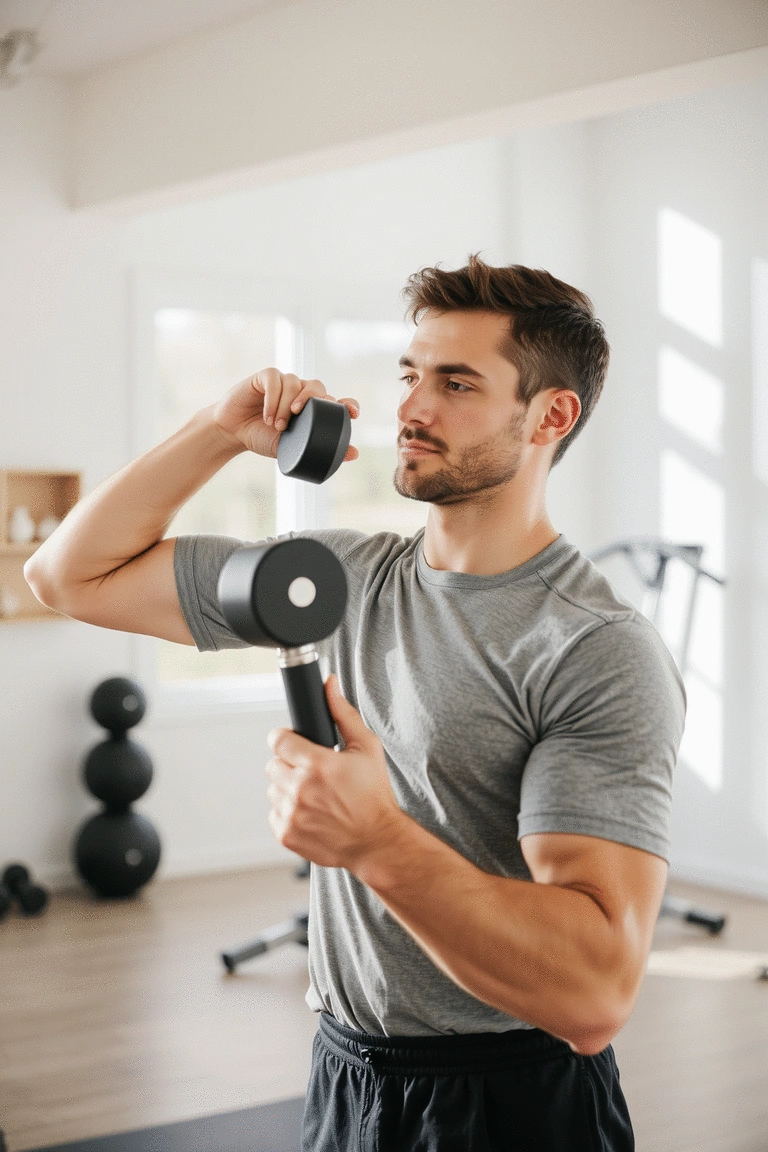
Build shoulder strength while protecting your joints with this move.
Why this works: The dumbbell shoulder press enhances upper body strength while allowing for a natural range of motion. This exercise effectively targets your shoulders without straining your joints, making it ideal for low-impact workouts.
How to implement this step:
- Start seated or standing: Hold a dumbbell in each hand at shoulder height.
- Press overhead: Extend your arms fully while maintaining a neutral spine.
- Lower slowly: Return to the starting position with control.
💡 Pro Tip: Try alternating arms for a balanced workout—this engages your core and enhances stability.
Step 4: Experience the Perfect Dumbbell Row
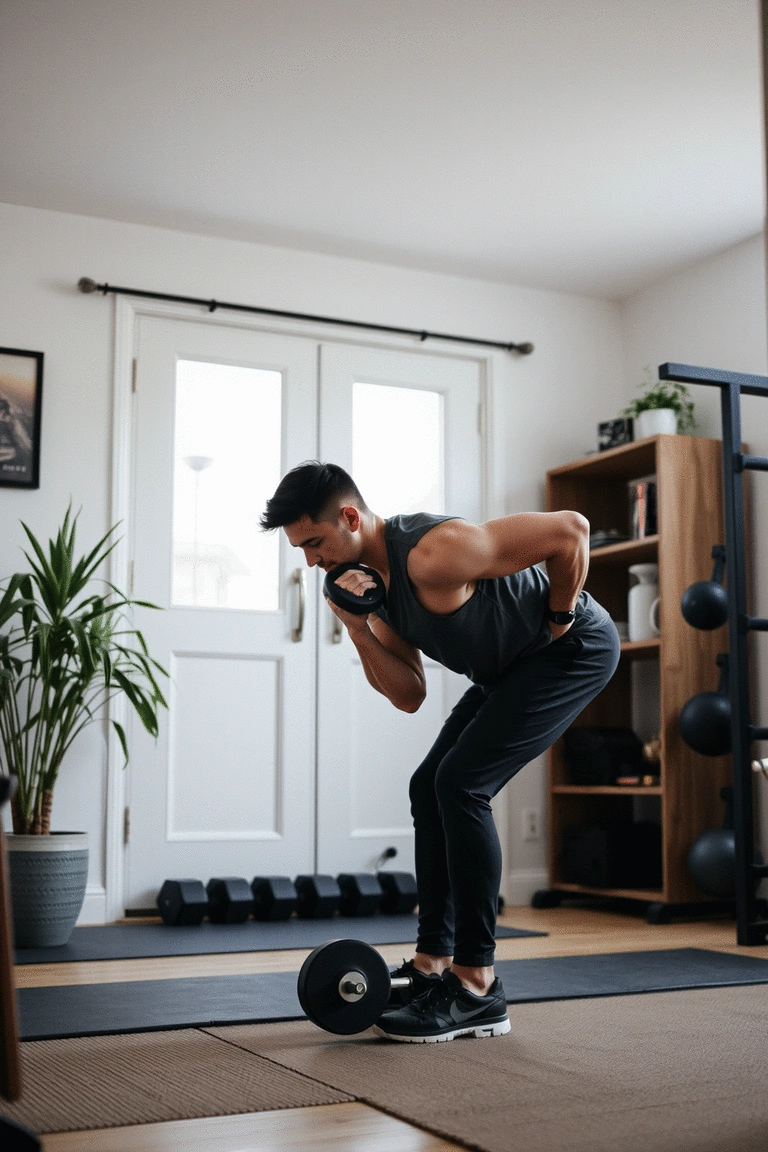
Strengthen your back and improve posture with this effective exercise.
Why this works: The dumbbell row targets your latissimus dorsi and upper back muscles while minimizing strain on your lower back. This exercise promotes better posture and overall upper body strength, making it perfect for low-impact routines.
How to implement this step:
- Bend forward: With dumbbells in hand, hinge at the hips keeping your back flat.
- Pull towards your waist: Engage your back muscles as you bring the dumbbells up.
- Lower slowly: Return to the starting position with control to maximize muscle engagement.
💡 Pro Tip: Focus on squeezing your shoulder blades together at the top for better muscle activation!
Step 5: Incorporate the Must-Have Dumbbell Lateral Raise
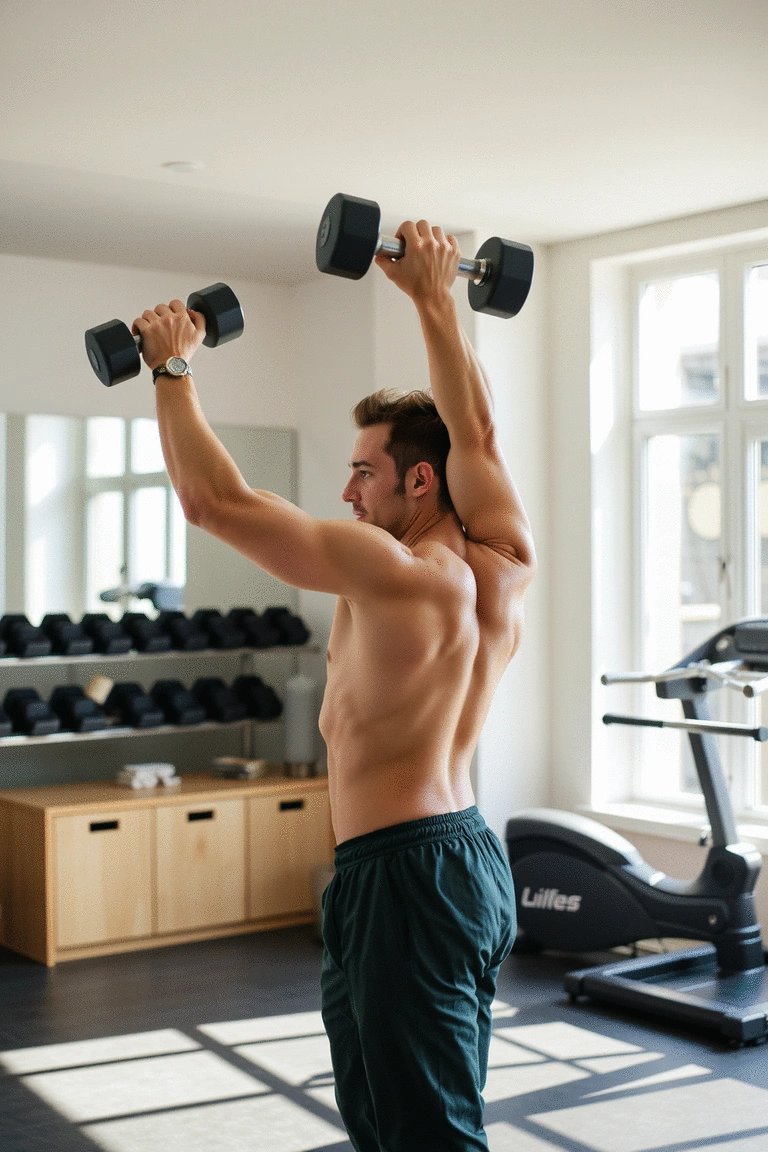
Tone your shoulders and improve stability with this key move.
Why this works: Lateral raises effectively engage the deltoid muscles in your shoulders while promoting increased stability. This low-impact move helps build strength without compromising joint integrity.
How to implement this step:
- Stand tall: Hold dumbbells at your sides with palms facing inward.
- Lift to shoulder height: Raise the dumbbells out to the side, keeping elbows slightly bent.
- Lower with control: Return to the starting position, focusing on the muscle contraction.
💡 Pro Tip: Keep movements slow and controlled for maximum muscle engagement; avoid swinging the weights!
Step 6: Finish Strong with the Best Dumbbell Squat
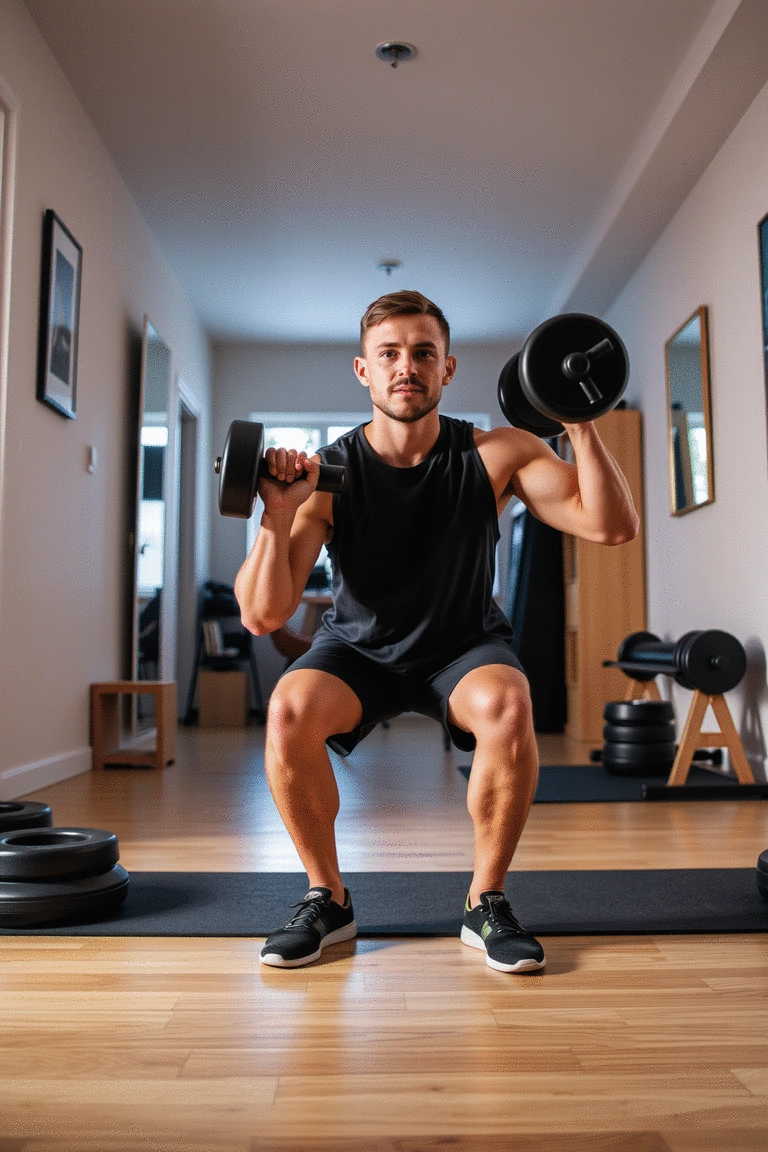
Build leg strength while being gentle on your joints.
Why this works: Dumbbell squats engage your quads, hamstrings, and glutes while allowing you to control the depth of your squat. This low-impact exercise helps strengthen your lower body without unnecessary strain on your knees.
How to implement this step:
- Hold weights at your sides: Stand with feet shoulder-width apart, dumbbells in hand.
- Squat down: Bend your knees and lower your body as if sitting back into a chair.
- Stand up: Push through your heels to return to standing, engaging your glutes.
💡 Pro Tip: Keep your chest up and back straight throughout the squat to prevent injury and maximize effectiveness!
Step 7: Cool Down with Gentle Dumbbell Stretches
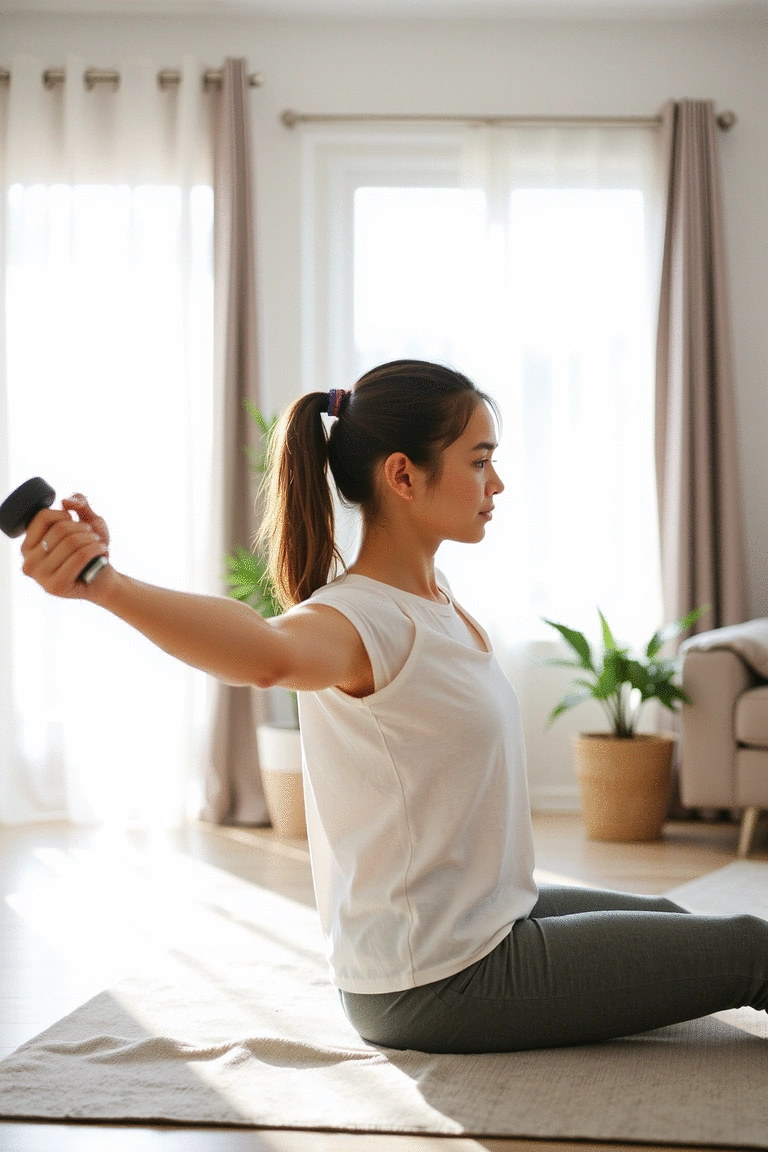
Aid recovery and enhance flexibility with these calming stretches.
Why this works: Incorporating gentle stretches with light weights helps to improve flexibility and reduce muscle tension after a workout. This important step promotes recovery and prevents soreness, ensuring you're ready for your next session.
How to implement this step:
- Overhead triceps stretch: Hold a dumbbell overhead and gently stretch your triceps.
- Seated hamstring stretch: Use a dumbbell to deepen your stretch while seated.
- Side bends: Hold a dumbbell in one hand and lean to the opposite side for a gentle lateral stretch.
💡 Pro Tip: End every workout with a cool-down to improve recovery and maintain flexibility over time!
